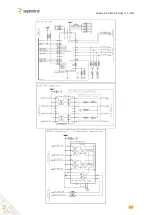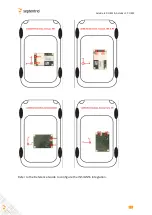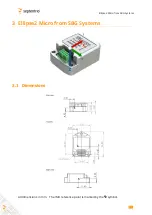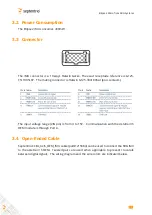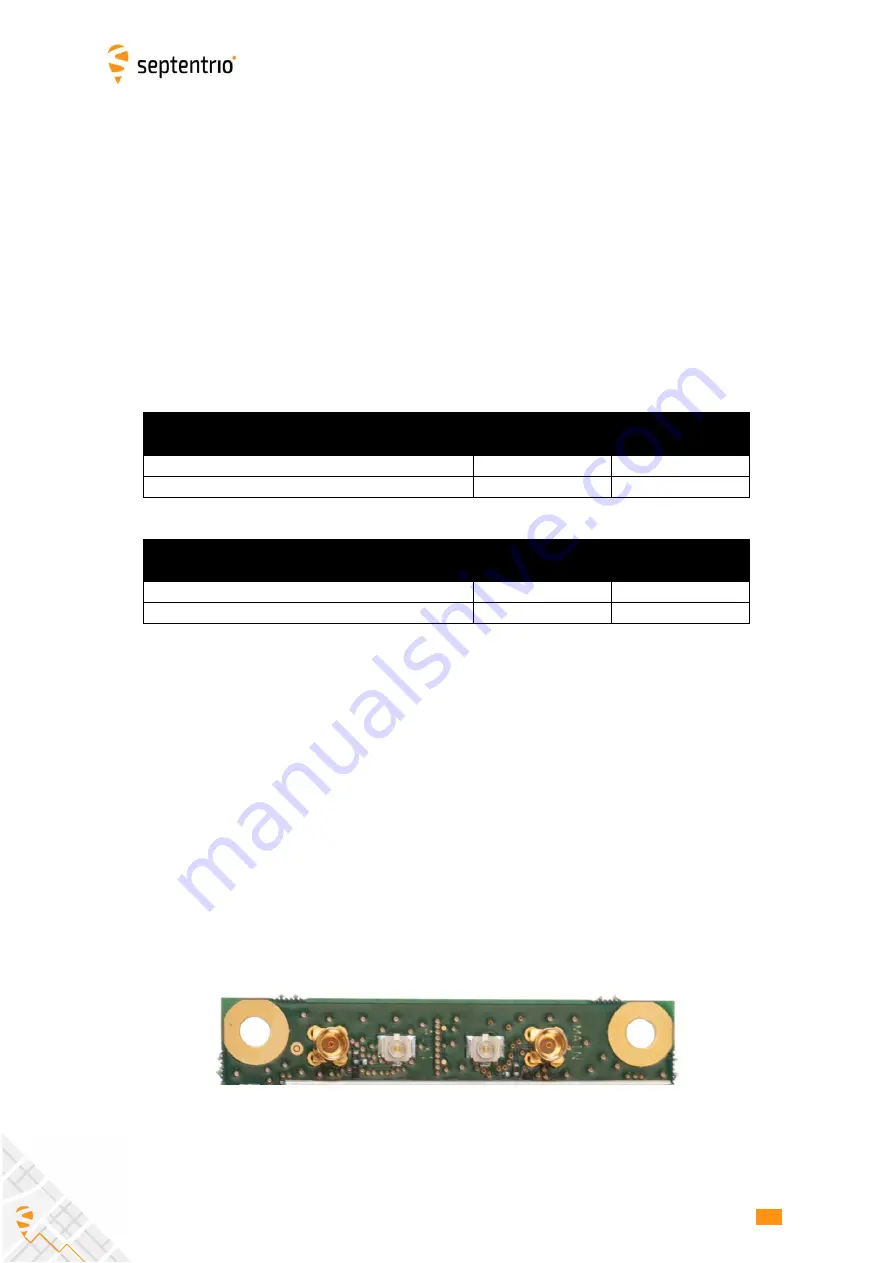
9
9
AsteRx-i3 D OEM & AsteRx-i3 S OEM
9
2.5
Power and Power Consumption
The board is powered through pin#1 and pin#2 of the 30-pin connector. Power supply
voltage must be 3.3V +/-5%.
The power consumption depends on the set of GNSS signals enabled with the
setSignalTracking
command.
The following table shows the typical power consumption for selected sets of signals. The
dual antenna configuration corresponds to a receiver where the option to track from the
AUX1 antenna is enabled.
AsteRx-i3 D OEM:
Signals enabled with
setSignalTracking
Power consumption
Dual antenna
Single antenna
GPS L1+L2, GLO L1+L2
1.35 W
1.00 W
All GNSS signals from all GNSS constellations 1.80 W
1.20 W
AsteRx-i3 S OEM excluding SBG IMU (add 400mW to include it):
Signals enabled with
setSignalTracking
Power consumption
Dual antenna
Single antenna
GPS L1+L2, GLO L1+L2
1.15 W
0.80 W
All GNSS signals from all GNSS constellations 1.60 W
1.00 W
Enabling the built-in L-Band demodulator with the
setLBandSelectMode
command adds
100 mW.
Enabling wideband interference mitigation with the
setWBIMitigation
command adds
160 mW (dual antenna) or 80mW (single antenna).
Consumption in standby mode:
3 mW
Note that the power consumption in the above table are average values. To account for
peak currents, the minimum power supply drive capability should be 1 Ampere.
2.6
RF Interface
For illustration purposes, the above picture shows both u.FL and MMCX connectors. In
reality, only one type of connector is available depending on the board variant.
AUX1
MAIN


















